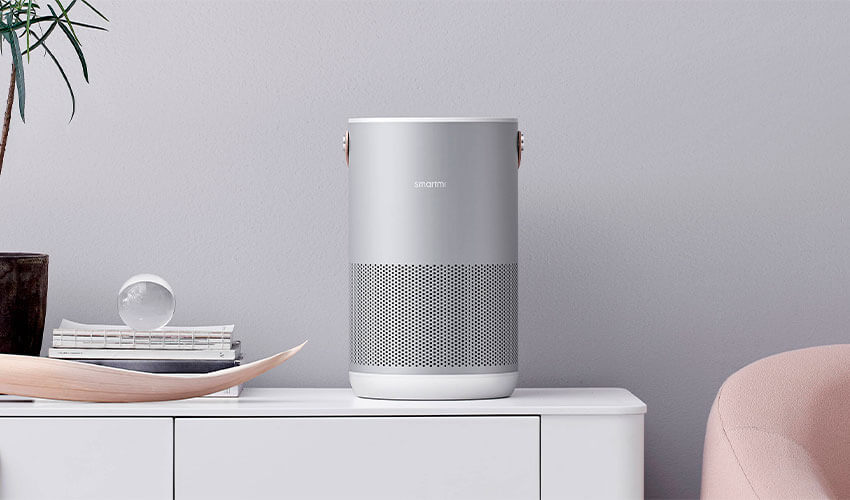Global Residential Air Purifiers Market: Industry Analysis and Forecast (2020-2026) – by Filtration Technology, Type, and Region.

The Global Residential Air Purifiers Market size is projected to reach US$ 14.1 Bn at the end of the forecast period at a CAGR of 8.05%.
The global Residential Air Purifiers market report is a comprehensive analysis of the industry, market, and key players. The report has covered the market by demand and supply-side by segments. The global Residential Air Purifiers report also provides trends by market segments, technology, and investment with a competitive landscape.
Definition of Residential Air Purifiers:
Residential air purifiers or air cleaners are machines that enhance indoor air quality by removing air contaminants such as dust, smoke, pollen, and dander. Manufacturers around the world are improving energy-saving air purifiers that use less power than traditional air purifiers to help reduce carbon emissions and energy costs.
Global Residential Air Purifiers Market Dynamics:
By the end of 2019, the global residential air purifier market had generated significant revenue. Factors such as growing air pollution levels around the world, as well as rising public health issues, are propelling the global residential air purifier market forward. Consequently, in developing countries such as India, China, Brazil, Turkey, Malaysia, and South Africa, leading market players of residential air purifiers are running campaigns to raise awareness and increase adoption of air purifiers as part of their marketing strategy. According to MMR report, United States residential air purifier market expected to rise by the US $ 0.54 billion during 2019-2026, with a CAGR of over 4.5 %.
In residential air purification systems, fibrous media air filters, and electronic air cleaners are the most widely used air filtration technologies. The fibrous media air filter is made up of tightly positioned fibrous or porous fabrics that trap microscopic fine particles like dust, pollen, mold, and bacteria. Filters that are electrically charged are used in electronic air filter technology. To reduce the number of airborne contaminants in the home, electronic air filter technology uses electrically charged filters. Activated carbon, UV, negative ion, and ozone are some of the latest air filtration technologies that can provide bacteria-free air 100 % of the time.
Global Residential Air Purifiers Market Segmentation:
Based on the filtration technology, the residential air purifiers market is segmented into high-efficiency particulate air (HEPA), electrostatic precipitators (ESPs), ultraviolet, ionizers, and ozone generators. High-efficiency particulate air (HEPA) filters made up about 83.78 % of the demand in 2019 and dominated the market. Large airborne particles and particles containing dust mite and cockroach allergens are captured by HEPA filters. During the forecast period, demand for HEPA filter-based air purifiers is expected to be high in both the residential and commercial sectors. The ability to eliminate particles with a size greater than or equal to 0.3 micrometers is required by the two most popular requirements for HEPA air purifiers, namely 99.95 % (European Standard) or 99.97 % (ASME standard).
In 2019, Asia-Pacific dominated the industry, and this trend is expected to continue in the forecast period. China is the largest market for residential air purifiers on a global scale. Foreign brands dominate the Chinese industry, with a market share that far exceeds that of domestic brands. Rapid industrialization and urbanization have resulted in high levels of pollution in China’s and India’s major cities. Governments are taking the requisite steps to address the growing concern. Many Asian countries have yet to develop rigorous air purifier requirements. As a result, in countries where comprehensive air purifier requirements do not exist, the market is flooded with low-cost, non-standard air purifiers.
The objective of the report is to present a comprehensive analysis of the Global Residential Air Purifiers Market to the stakeholders in the industry. The past and current status of the industry with the forecasted market size and trends are presented in the report with the analysis of complicated data in simple language. The report covers all the aspects of the industry with a dedicated study of key players that include market leaders, followers, and new entrants.
PORTER, SVOR, PESTEL analysis with the potential impact of micro-economic factors of the market have been presented in the report. External as well as internal factors that are supposed to affect the business positively or negatively have been analysed, which will give a clear futuristic view of the industry to the decision-makers.
The report also helps in understanding the Global Residential Air Purifiers Market dynamics, structure by analyzing the market segments and project the global Residential Air Purifiers market size. Clear representation of competitive analysis of key players By Filtration Technology, price, financial position, product portfolio, growth strategies, and regional presence in the Global Residential Air Purifiers Market make the report investor’s guide.



